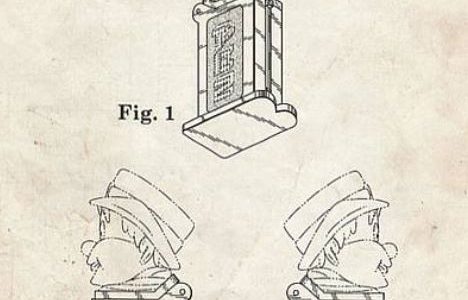
PRODUCT DESIGNS NOW DIFFICULT TO PROTECT
Unique packs and novel product designs are often critical for a product’s success. But how can you protect your unique trade dress and product configurations from those looking to capitalize on your hard work with a similar product or pack design?
Occasionally, a pack design might be copyrighted, although copyright is not typically available for “useful articles”, that is, items that are intrinsically utilitarian. Pictorial, graphic or sculptural features that can exist independently from their utilitarian aspects can be protected. Infringement actions are brought for federally registered copyrights that are substantially similar in appearance to another product and if it can be demonstrated that the infringer had access to the copyrighted work. For publicly distributed items, this should not be difficult.
Unfortunately, most candy products cannot be copyrighted under this standard. Until recently, companies applied for federal registration of a configuration trademark on a product’s appearance, if the configuration indicated the company as the source of the product. These registrations were granted unless a confusingly similar configuration was already registered. Last year, however, the Supreme Court changed the rules. In Wal-Mart Stores, Inc. v. Samara Brothers, Inc. 120 S.Ct. 1339 (2000), the Supreme Court decided product configuration protection is available only by showing that one’s design has become well-known to the purchasing public, and hence, has acquired distinctiveness or “secondary meaning.” As a result, the U.S. Trademark Office no longer grants registration on product configurations without a showing of secondary meaning, which can be established based on at least five years of substantially exclusive use.
Design patent registration is available for product configurations that are new, original and ornamental. Unlike trademark registration, which will be denied for product configurations which do not serve as a source identifier and are deemed “merely ornamental”, a design patent does not require the design to indicate the source. It is the ornamentation of a product’s surface and/or shape that is required for design patent registration. Essentially, ornamentation over functionality is key to design patentability. That is, is if there is more than one way to accomplish the functional aspects of the design, it may be deemed primarily ornamental, and hence, patentable. If the design is dictated by the article’s function, a design patent may be denied.
Remember, patent protection will not be available if more than twelve months have passed since the product was first sold or was otherwise in public use. Hence, companies should apply for design patents prior to launching a new product. Since registration typically takes eighteen months, by applying for a design patent before roll out, your packs can display “patent pending” as a means to deter imitation.
Once granted, design patent registration provides fourteen years of exclusive rights to the product configuration as embodied in the patent application. After several years in the marketplace, you can seek trademark protection for product configuration. Again, five years of substantially exclusive use provides prima facie evidence of the acquired distinctiveness needed for registration. At this stage in the product’s life cycle, trademark registration offers an additional level of protection for what is now a valuable commodity.
Furthermore, once the design patent expires, trademark rights extend protection indefinitely, as long as the mark remains in use. Although Wal-Mart v. Samara effectively eliminated the long-standing practice of obtaining trademark registration following a product’s introduction, all is not lost. You can now use patent protection to immediately safeguard your interests.
Originally published in Candy Business Magazine.